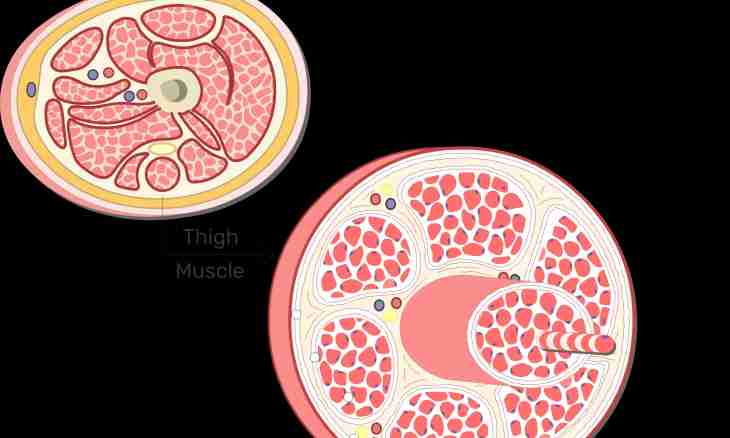Muscle – very wide concept. The fabrics designated by this term can differ from each other by origin, have differences in the building, but they are united by ability to reduction.
There are three types of muscle tissue. Smooth muscles form walls of blood vessels, a stomach, intestines, urinary tract. The cross-striped cardiac muscle makes the most part of a muscular layer of heart. The third look – skeletal muscles. The name of these muscles is connected with the fact that they are connected to bones. Skeletal muscles and bones represent the uniform system providing movements.
The skeletal muscle consists of special cages – myocytes. These are very large cages: their diameter is from 50 to 100 microns, and length reaches several centimeters. Other feature of myocytes – existence of a set of kernels which quantity reaches hundreds.
The main function of a skeletal muscle – reduction. It is provided with special organellas – miofibrilla. They settle down near mitochondrions, reduction demands a large amount of energy.
Myocytes unite in a complex – miosimplast, surrounded with one-nuclear cages – miosatellitam. They represent stem cells and begin to share actively in case of injury of a muscle. Miosimplast and miosatellita form fiber – structural unit of a muscle. Muscle fibers are connected among themselves by friable connecting fabric in bunches of the first row of which bunches of the second row, etc. consist. Bunches of all ranks are covered with the general cover. Soyedinitelnotkanny layers reach the ends of a muscle where pass into the tendon which is attached to a bone. The reductions which are carried out by skeletal muscles require a large amount of nutrients and oxygen therefore muscles are much supplied with blood vessels. And still blood is not always capable to provide muscles with oxygen: at reduction of muscles the vessels are blocked, inflow of blood stops therefore at cells of muscle tissue there is a protein capable to connect oxygen – a myoglobin. Reduction of muscles is regulated by a somatic part of the nervous system. The peripheral nerve consisting of axons of the neurons located in a spinal cord approaches each muscle. In the thickness of a muscle the nerve branches on shoots axons, each of which reaches separate muscle fiber. The impulses from the central nervous system transferred on peripheral nerves regulate a tone of muscles – their constant tension thanks to which the body keeps the certain situation and also reductions of muscles connected with involuntary and arbitrary motive acts. At reduction the muscle is shortened, its ends approach. The muscle at the same time pulls for itself a bone to which it is attached by means of a tendon, and the bone changes the situation. To each skeletal muscle there corresponds the muscle antagonist which relaxes at its reduction, and then is reduced that will return a bone to former situation. For example, for example, the antagonist of a biceps – a biceps of a shoulder are a triceps, a three-headed muscle. The first of them acts as a sgibatel of an elbow joint, and the second – as a razgibatel. However, such division is conditional, some motive acts demand simultaneous reduction of muscles antagonists. The person has more than 200 skeletal muscles differing from each other by the size, a form, a way of attachment to a bone. They do not remain invariable during life – the amount of either muscular, or connecting fabric increases in them. Increase in amount of muscle tissue is promoted by physical activity.
